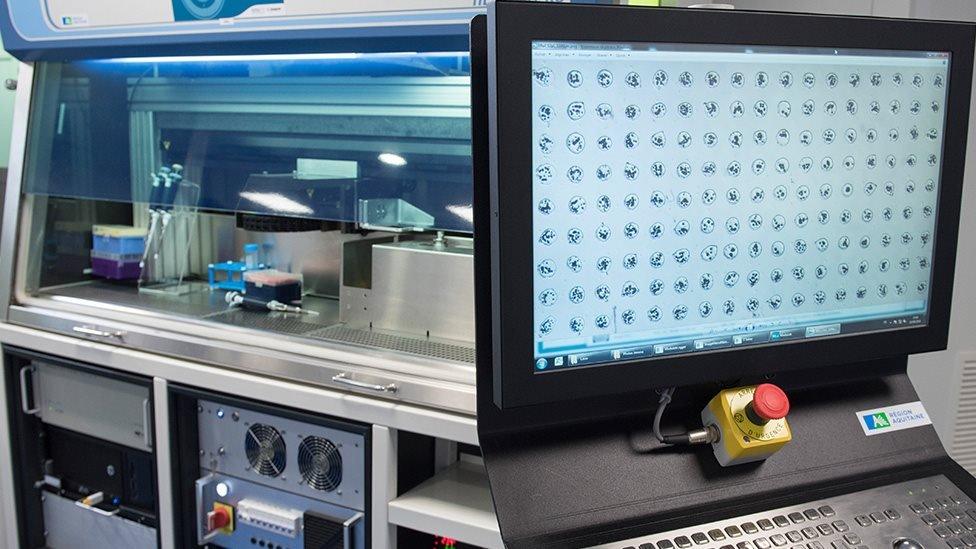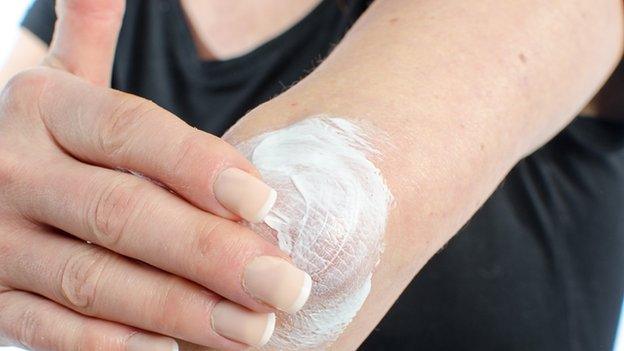Could 3D printed hair follicles help with hair loss?
- Published

Billions of pounds are spent on hair loss treatments every year
Hair follicles created by a process similar to 3D printing could one day be used as implants, L'Oreal has said.
The cosmetics firm is partnering with a French bio-printing company called Poietis, which has developed a form of laser printing for cell-based objects.
Hair follicles have not been created this way before and the firms expect it will take at least three years to adapt the process.
However, one hair loss charity said it was too early "to be getting excited".
L'Oreal already uses 3D printed skin in its product research.
"If we manage to bio-print a hair follicle we will enhance our knowledge of both hair biology and some of the mysteries of hair growth and loss," Jose Cotovio, a director at L'Oreal's Research and Innovation division, told the BBC.
Initially the follicles would be used to test new products, he added.
"Hair loss is very emotional for some people and very distressing - if we succeed in identifying some ingredients that can fight this it will be a huge revolution.
"The next step is, will it be possible to implant? This is the holy grail."

The printing process involves placing successive layers of tiny droplets of biological ink
The technique will make use of a laser-assisted bio-printing process developed by Poietis over the past couple of years.
It begins with the creation of a digital map that determines where living cells and other tissue components should be placed to create the desired biological structure. This takes into account how the cells are expected to grow over time.
The file is then turned into instructions for the printing equipment, so that it can lay down tiny droplets made out of the cell-based "bio ink" one layer at a time.
The printing process involves bouncing a pulsing laser off a mirror and through a lens, so that when it hits a ribbon containing the bio ink, a droplet of the matter falls into place.
About 10,000 of these micro-droplets are created every second.
The resulting organic tissue would then need time to mature before the hair follicles are ready to grow.
Poietis says it has already used the technique to create cartilage and other viable types of cell lines.
It typically takes about 10 minutes to print a piece of skin 1cm (0.4in) wide by 0.5mm (0.2in) thick.
However, since hair follicles are complex and consist of 15 different cells in a sophisticated structure, they may take longer.
Poietis is not the only company working on bio-printing, external, but most others use extrusion - which involves pushing a bio-ink through a nozzle - rather than lasers to build their tissue.
Poietis suggests its technique puts less stress on the biological matter, meaning there is less risk of causing it damage.
But its chief executive Fabien Guillemot acknowledges that adapting it to create hair follicles will be challenging.
"It's of the most complex objectives so far of all the bio-printing projects that we have created," he said.
Alopecia UK - a charity that provides support and advice about hair loss - had mixed feelings about the development.
"It is encouraging to know that companies such as L'Oreal are investing in technology that may help those with hair loss in the future," said spokeswoman Amy Johnson.
"However, we would suggest it's still very early days to be getting excited about what this potentially could mean for those with medical hair loss. At this point it is unclear as to whether this technology could benefit those with all types of hair loss.
"Also, if this new technology did lead to a treatment option, given the high costs of existing hair transplant procedures, how many people will be able to realistically afford any new technological advances that may become available?
"As with any other research and development into processes that may be able to help those with hair loss, we watch with great interest."
- Published10 August 2016

- Published19 May 2015
